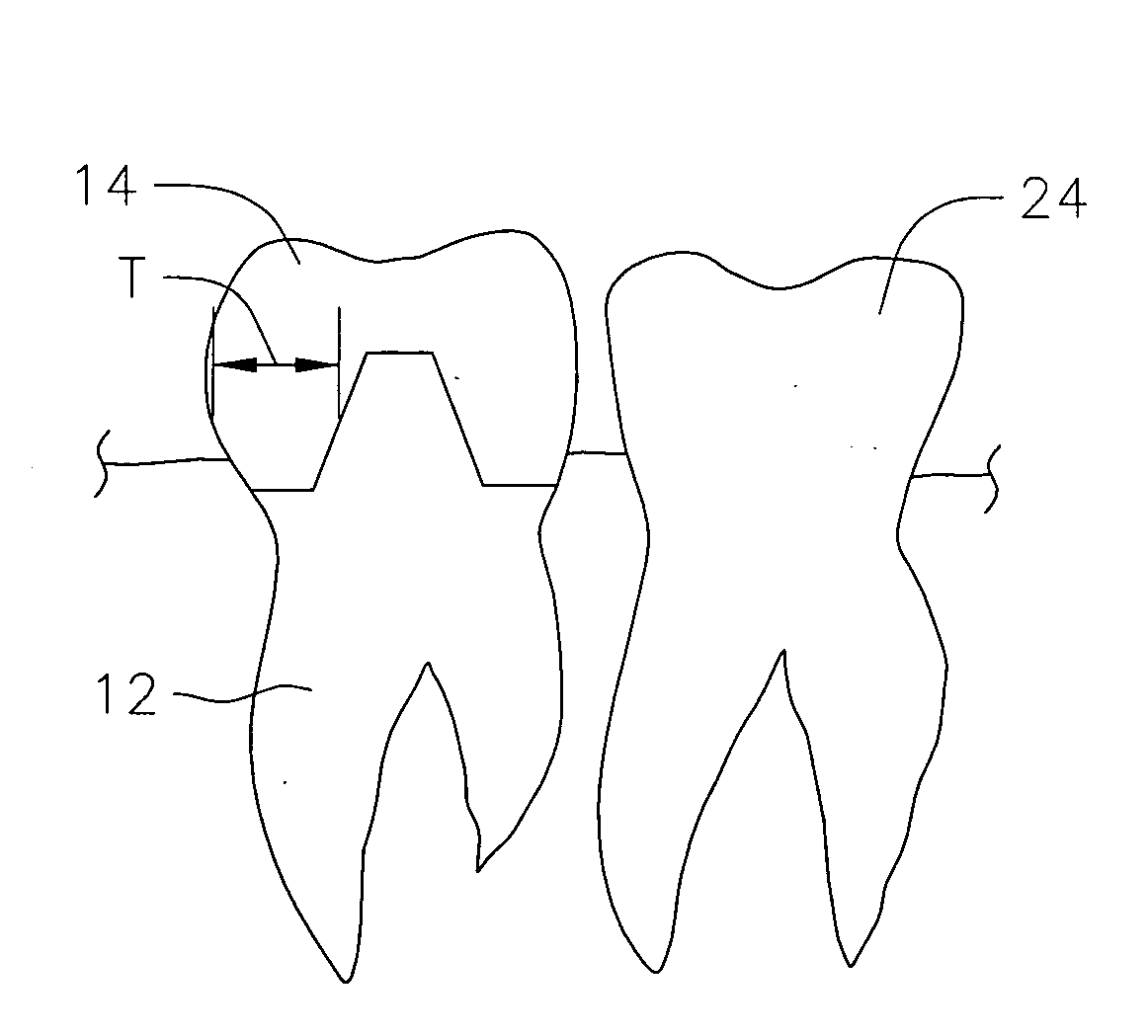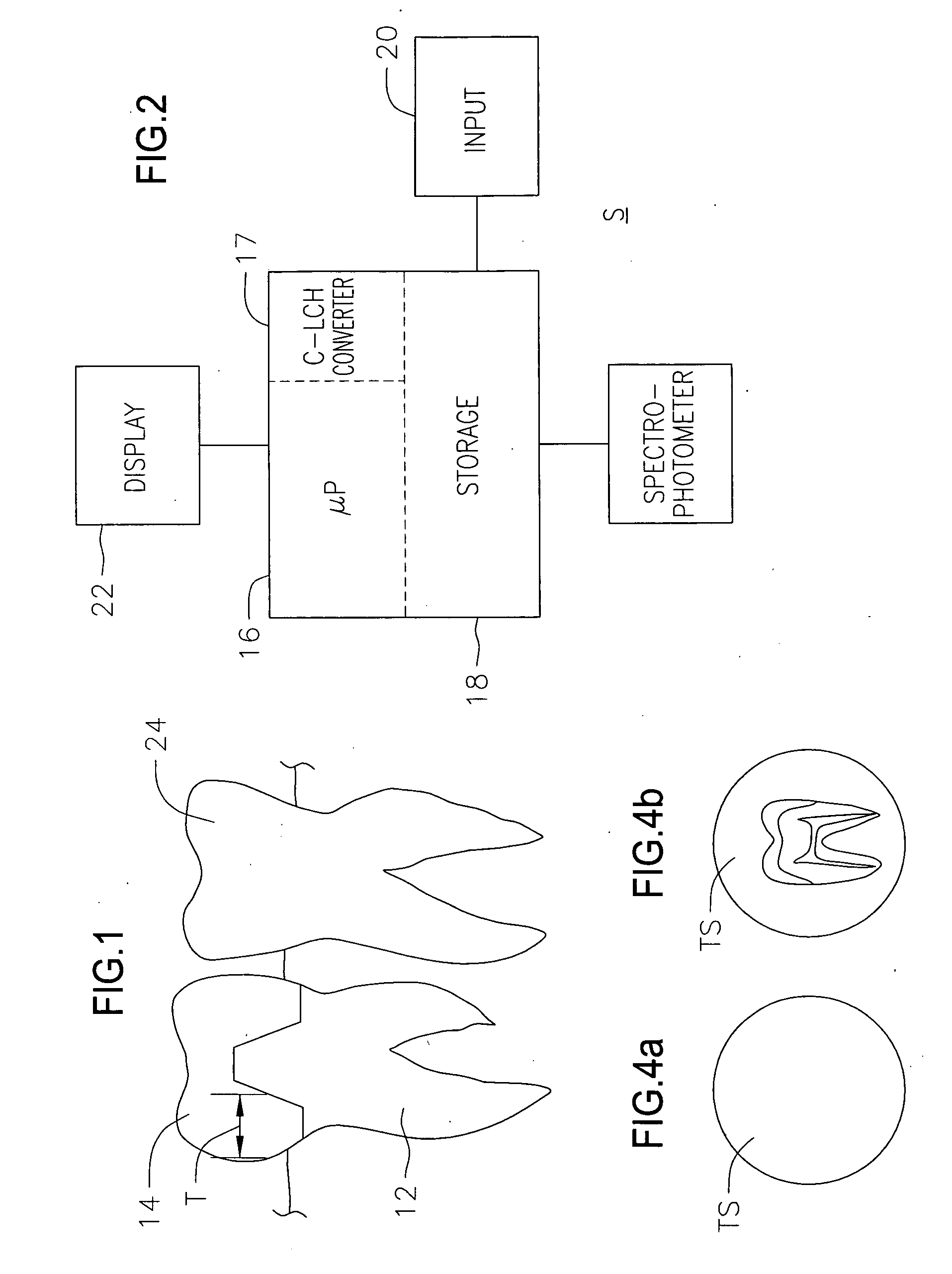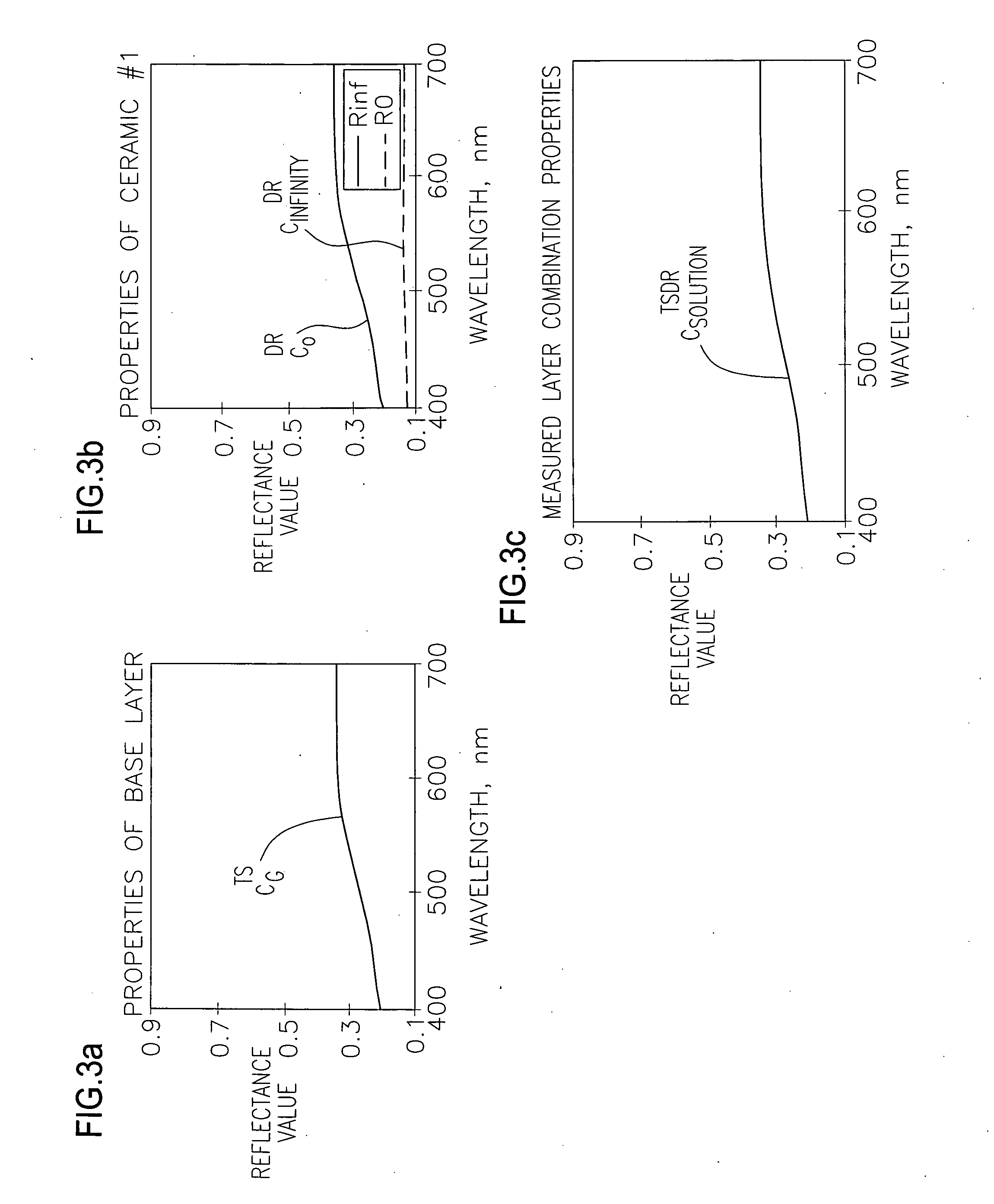Method and apparatus for selecting translucent dental materials
- Summary
- Abstract
- Description
- Claims
- Application Information
AI Technical Summary
Benefits of technology
Problems solved by technology
Method used
Image
Examples
Embodiment Construction
[0036]With reference to FIGS. 1 and 2, the present invention is directed toward a system S and method for measuring influence of an underlying tooth structure 12 in providing at least one proposed shade and / or construction of a dental restoration 14 with improved shade-matching where translucent restoration dental materials are used without an opaque layer. The underlying tooth structure 12 may be a prepped or reduced tooth, an abutment of an implant or any other structure known in dentistry for building an artificial tooth. The dental restoration 14 may include, without limitation, a crown, veneer, inlay, onlay, and the like that is to be applied to the underlying tooth structure 12.
[0037]In accordance with the present invention, pertinent optical properties of simulated or natural prospective tooth structure materials are measured. The optical properties of interest include but are not limited to reflectance and / or reflectivity of the materials. Likewise, pertinent optical propert...
PUM
 Login to View More
Login to View More Abstract
Description
Claims
Application Information
 Login to View More
Login to View More - R&D
- Intellectual Property
- Life Sciences
- Materials
- Tech Scout
- Unparalleled Data Quality
- Higher Quality Content
- 60% Fewer Hallucinations
Browse by: Latest US Patents, China's latest patents, Technical Efficacy Thesaurus, Application Domain, Technology Topic, Popular Technical Reports.
© 2025 PatSnap. All rights reserved.Legal|Privacy policy|Modern Slavery Act Transparency Statement|Sitemap|About US| Contact US: help@patsnap.com



